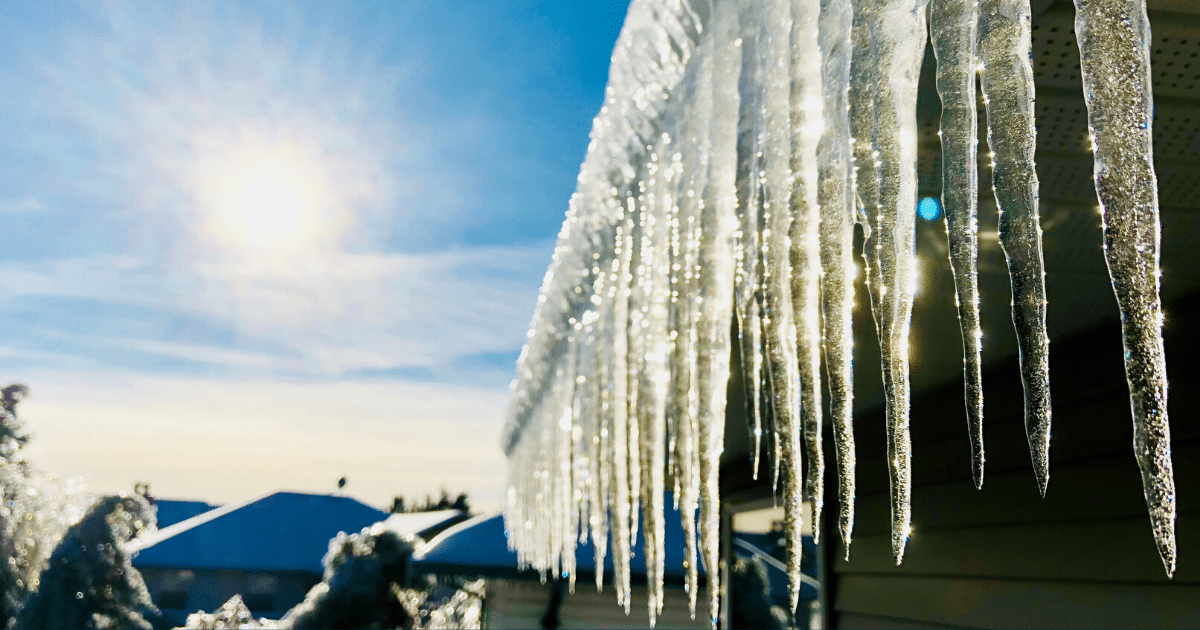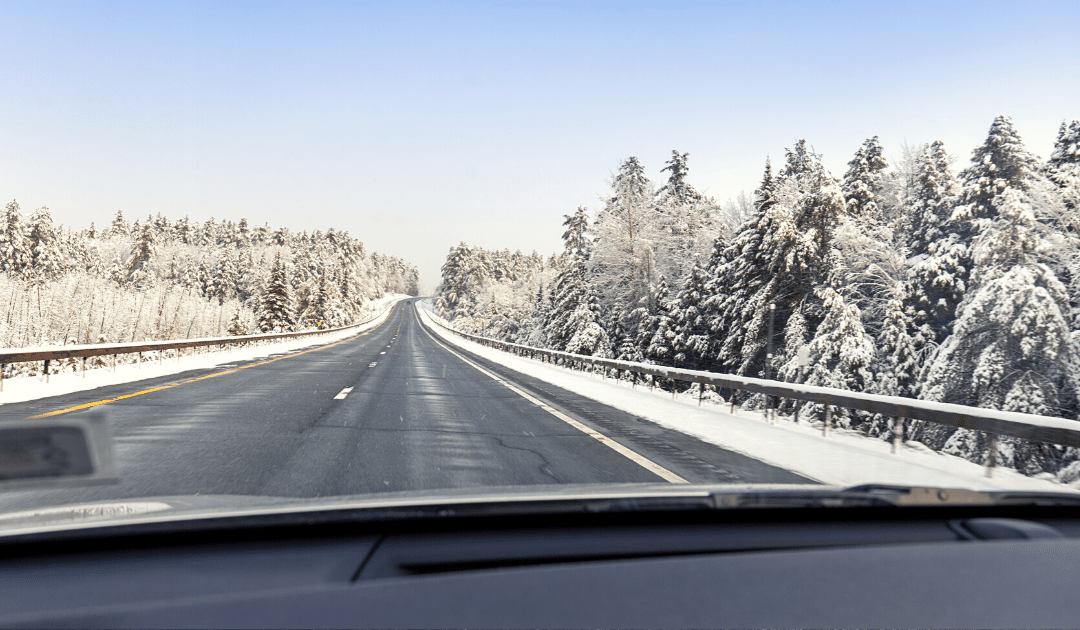The same winter wonderland scene that gives us soft snowdrifts outside cozy living rooms can also serve up treacherous blizzards, freezes, and black ice.
Contrary to its name, black ice is actually clear and forms a frozen “glaze” that coats all kinds of surfaces and can cause slips, falls, and car accidents. It’s incredibly dangerous not only because of how slippery it is but also because it’s so hard to spot. Transparent and thin, it can hide in plain sight.
It frequently occurs on roads, sidewalks, porches, pathways, and driveways – in other words, surfaces we frequent to get where we’re going every day. Here are some ways to stay safe at home and on the road when conditions are ripe for black ice.

At Home
Besides your driveway, you probably have paved walkways or other hard-surfaced paths around your home. These tips will help reduce injury risk when ice is underfoot, and before it forms.
-
- Unblock drains and gutters. This will help melting snow and ice go where you want it to, so it doesn’t freeze on walkways.
- Keep up with snow shoveling. Make sure to keep up with falling snow so that it doesn’t melt and refreeze into a slipping hazard.
- Put out a tarp. If freezing temps are on their way, lay out a tarp or cloth where you want to prevent black ice. This can include your car, porch, pathways, and the driveway.
- Add some grit. You can sprinkle fine gravel, sand, kitty litter, wood ash or coffee grinds on surfaces to reduce slickness. A note of caution that some work better than others and some can leave a mess.
- Consider a snow-melting mat. If you deal with freezing temps very often, you might want to look into heated driveway mats, which can be effective at preventing black ice formation.
- During icy conditions
- Clear out the snow. If snow has fallen, clear it out so the sun can dry the surface rather than melt the snow into ice.
- Consider a de-icer. Use these with caution though (and probably as a last resort), as some can be harmful to pets, your yard, driveway, and the environment. Try not to over-salt, either, for the same reasons.

In the Car
When temps are at or below freezing, avoid driving if you can. But if you have to get on the road, keep these precautions in mind.
-
- Check the tires. Tires are the only part of your car that touches the road. The less tread, the less traction. If they’re getting worn, replace them asap. Better yet, get winter tires.
- Know your brakes. Standard brakes perform differently from anti-lock, or ABS, brakes, so make sure you know what kind you have and how they behave in snowy, icy, and other hazardous road conditions.
- Do a winter safety check. Make sure your vehicle is prepped for winter safety (and stranding as a worst-case scenario!) – follow our tips here.
- Double-check your car kit. All it takes is one small patch of black ice to cause a slide that lands you immobile on the roadside. Check that your emergency winter car kit contains everything you need.
- Warm-up your car. Let your car warm up before getting on the road. When you feel the heat coming through the vents, it’s sufficiently warmed and ready to go.
- Improve your visibility. Make sure you set out with 100% visibility. If your windshield is foggy inside or iced over on the outside, use our tips here to get it cleaned off and clear.
- Take your time. Give yourself extra time to get where you’re going and be sure to drive much slower than you normally would – this will give you and other drivers more time to react if you need to.
- Slow down and increase following distance. Give yourself and other drivers more room than normal – and never tailgate.
- Know what to do in a skid. If your car goes into a skid, do not hit the accelerator or the brakes. Instead, steer gently in the direction of the skid, making sure not to jerk the steering wheel. Get the full step-by-step info here.
Your best bet against injuries caused by black ice is to use an abundance of caution, make prevention a habit and develop a “sixth sense” for spotting this wintertime danger. Stay safe out there!
This article is furnished by California Casualty. We specialize in providing auto and home insurance to educators, law enforcement officers, firefighters, and nurses. Get a quote at 1.866.704.8614 or www.calcas.com.
- Graduation – When to Remove Your Child from Your Auto Policy - May 18, 2023
- How to Prevent Catalytic Converter Theft - May 17, 2023
- How Much Does Home Insurance Cost? - May 17, 2023

